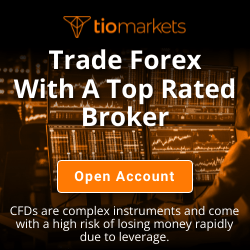What is Intrinsic Value? | Definition and Meaning - TIOmarkets
BY TIOmarkets
|มิถุนายน 4, 2567In the realm of finance and investing, understanding the concept of intrinsic value is fundamental. It serves as a cornerstone for investors aiming to make informed decisions based on the inherent worth of an asset, rather than its current market price. This article delves into the definition, importance, and methods of calculating intrinsic value, providing a comprehensive overview for both novice and experienced investors.
Understanding Intrinsic Value
Intrinsic value is a term that captures the true, inherent worth of an asset. It is an estimate of a company's or asset's true value, based on underlying perceptions of its actual financial performance and prospects. Unlike market value, which is influenced by external factors such as market trends and investor sentiment, intrinsic value focuses on the fundamental, tangible aspects of a company.
Definition and Importance
Intrinsic value is often considered the 'real' value of an asset, reflecting its fundamental worth independent of its current trading price on the stock market. This concept is crucial for value investors who seek to identify stocks trading for less than their intrinsic value, aiming to invest in undervalued assets that have the potential for price correction.
Understanding intrinsic value is essential for making investment decisions that are grounded in reality rather than speculation. It provides a benchmark against which the market price of an asset can be evaluated, offering insights into whether an asset is overvalued, undervalued, or fairly priced.
Components of Intrinsic Value
The intrinsic value of a company or asset is typically calculated by assessing various fundamental indicators. These include earnings, dividends, growth rate, and the discount rate. Each of these components plays a vital role in determining the true worth of an investment.
Earnings and dividends provide a direct insight into a company's financial health and profitability, while the growth rate projects future earnings potential. The discount rate, on the other hand, adjusts future earnings back to their present value, accounting for the time value of money and investment risk.
Calculating Intrinsic Value
Calculating the intrinsic value of an asset is more of an art than a science, involving a blend of quantitative analysis and qualitative judgment. There are several models and formulas used by investors, each with its own set of assumptions and criteria.
Discounted Cash Flow (DCF) Method
The DCF method is one of the most widely used approaches for calculating intrinsic value. It involves estimating the total value of future cash flows produced by an asset and then discounting them back to their present value using a discount rate. This method is particularly useful for evaluating companies with steady cash flows.
The accuracy of the DCF method heavily depends on the assumptions made regarding future cash flows and the chosen discount rate. Despite its complexity, DCF provides a detailed framework for understanding the factors that contribute to an asset's value.
Dividend Discount Model (DDM)
For companies that pay regular dividends, the Dividend Discount Model (DDM) offers a simpler alternative. DDM calculates a stock's intrinsic value based on the theory that its value is the sum of all future dividends, discounted back to their present value. This model is particularly suited to stable, dividend-paying companies.
While DDM is easier to apply than DCF, its applicability is limited to companies with a clear history of dividend payments, making it less versatile for a broader range of investment opportunities.
Risks and Limitations
While the concept of intrinsic value provides a solid foundation for investment decisions, it is not without its challenges and limitations. The process of calculating intrinsic value is inherently subjective, relying on assumptions and forecasts that may not always hold true.
Subjectivity and Assumptions
The calculation of intrinsic value is highly sensitive to the assumptions made regarding future earnings, growth rates, and the appropriate discount rate. Small changes in these assumptions can lead to significant variations in the calculated value, potentially leading to over- or under-valuation of an asset.
This subjectivity underscores the importance of conservative estimation and thorough analysis, emphasizing the need for investors to approach intrinsic value calculations with caution and skepticism.
Market Dynamics
Another limitation is the influence of market dynamics. Intrinsic value does not account for short-term market fluctuations driven by investor sentiment, speculation, or external economic factors. As a result, there can be a substantial disconnect between an asset's intrinsic value and its market price, especially in volatile or irrational markets.
This discrepancy highlights the need for patience and a long-term perspective when investing based on intrinsic value, as it may take time for the market price to align with the fundamental worth of an asset.
Psychological Factors in Intrinsic Value Assessment
When considering intrinsic value, it's essential to acknowledge the psychological factors that can influence investors' perceptions. Behavioral biases, such as anchoring or herd mentality, can distort judgments of an asset's true worth. Investors must remain vigilant against these biases to ensure a more accurate assessment of intrinsic value.
Anchoring Bias
Anchoring bias occurs when investors fixate on specific information, such as the asset's historical price, and use it as a reference point for evaluating its intrinsic value. This bias can lead to underestimating or overestimating an asset's worth, as it anchors the assessment to a potentially irrelevant or outdated value.
To mitigate anchoring bias, investors should focus on current and relevant information when determining intrinsic value, rather than being swayed by past prices or external influences.
Herd Mentality
Herd mentality refers to the tendency of investors to follow the actions of the majority, without critically evaluating the intrinsic value of an asset. This behavior can create market bubbles or crashes, as investors base their decisions on the actions of others rather than on fundamental analysis.
By recognizing and resisting herd mentality, investors can make more independent and rational assessments of intrinsic value, reducing the impact of market trends on their investment decisions.
Comparative Analysis in Intrinsic Value Assessment
Another approach to assessing intrinsic value is through comparative analysis, where investors compare the intrinsic value of an asset to similar assets in the market. This method provides a relative valuation perspective, helping investors gauge whether an asset is priced attractively compared to its peers.
Peer Group Analysis
Peer group analysis involves identifying companies or assets within the same industry or sector and evaluating their intrinsic values. By comparing key financial metrics and performance indicators, investors can determine if an asset is undervalued or overvalued relative to its peers.
This comparative approach adds a layer of context to intrinsic value assessment, allowing investors to consider market trends and industry dynamics when determining the true worth of an asset.
Strengths and Weaknesses of Comparative Analysis
While comparative analysis can provide valuable insights into intrinsic value, it also has its limitations. The method relies on the availability of comparable assets and assumes that market prices accurately reflect intrinsic values across the board. Variations in industry dynamics or company-specific factors can introduce biases into the comparative analysis, affecting the accuracy of intrinsic value assessments.
Despite these challenges, comparative analysis offers a practical tool for investors to contextualize intrinsic value within the broader market landscape, enhancing their decision-making process.
Conclusion
Intrinsic value is a powerful concept that offers investors a method to assess the true worth of an asset, beyond the often volatile and speculative market prices. While the calculation of intrinsic value involves a degree of subjectivity and comes with its own set of challenges, it remains a critical tool for value investors seeking to make informed, rational investment decisions.
By understanding and applying the principles of intrinsic value, investors can better navigate the complexities of the financial markets, identifying opportunities to invest in assets at prices that reflect their actual worth. However, it's essential to approach this method with a critical eye and consider the inherent limitations and risks involved in such analyses.
Start Trading with True Value at TIOmarkets
Now that you've unlocked the knowledge of intrinsic value, take the next step with TIOmarkets and apply your insights to the real markets. As a top rated forex broker, we offer you the opportunity to trade over 300 instruments across 5 markets, all with low fees. Join our community of over 170,000 accounts from more than 170 countries and enhance your trading skills with our comprehensive educational resources. Ready to trade with a platform that values your financial education? Create a Trading Account today and start your journey towards informed and value-driven trading.

Risk disclaimer: CFDs are complex instruments and come with a high risk of losing money rapidly due to leverage. You should consider whether you understand how CFDs work and whether you can afford to take the high risk of losing your money. Never deposit more than you are prepared to lose. Professional client’s losses can exceed their deposit. Please see our risk warning policy and seek independent professional advice if you do not fully understand. This information is not directed or intended for distribution to or use by residents of certain countries/jurisdictions including, but not limited to, USA & OFAC. The Company holds the right to alter the aforementioned list of countries at its own discretion.
Join us on social media

Behind every blog post lies the combined experience of the people working at TIOmarkets. We are a team of dedicated industry professionals and financial markets enthusiasts committed to providing you with trading education and financial markets commentary. Our goal is to help empower you with the knowledge you need to trade in the markets effectively.